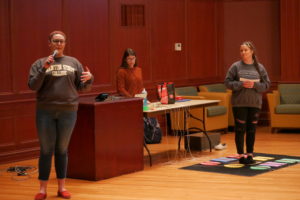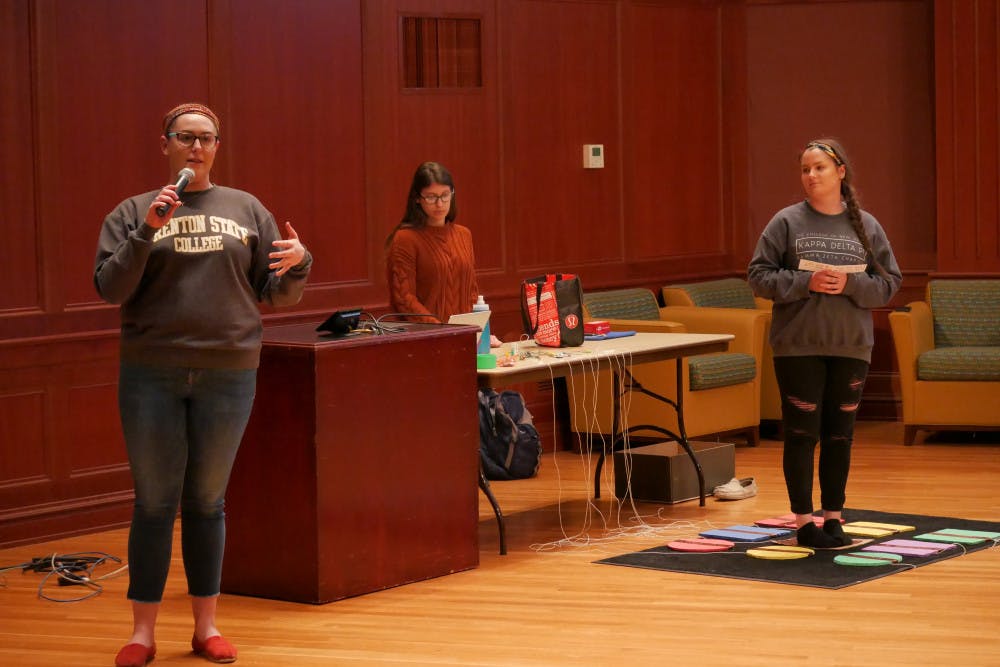By Alexandra Bonano
Staff Writer
After a semester of hard work and innovation, students show cased their skills in blending music and technology at the Music to the Max Demonstration, an informal concert on April 29 at 2 p.m. in Mayo Concert Hall.

Four different groups took the stage to share their projects, discussing their goals and creative processes. The students are all music or interactive multimedia majors and are in the class “Interactive Music Programming.”
“It’s a class where the students are challenged to write, in some cases, their first computer program to create interactive music systems,” said Associate Professor of Music Teresa Nakra.
The first group created an interactive mat that is similar to the game “Dance, Dance, Revolution.” The device allows kids to play nursery rhymes and children’s songs by stepping on different symbols on a mat.
The second group presented a loop-track, which allows users to play and record a series of notes that can be repeated throughout any song, which was followed by a presentation that shed light on the four common notes that are present in many pieces of music. This group sang fourteen popular songs, such as “She Will Be Loved” by Maroon 5 and “Jar of Hearts” by Christina Perri that contained these notes and used the technology to illustrate the common four notes.
The fourth group developed technology that allows users to separate the notes of a song and play them individually. These students also created an interactive mat that played different notes from a song, which in this case was the Mii music theme song on the Wii gaming system.
By separating these notes, one could play the notes however they wanted depending on what order they stepped on the squares.
“In addition to the ‘Max’ software that they’ve all written, they’ve all built some sort of hardware interface that uses what’s called a ‘Makey Makey,’ which is a little circuit board,” Nakra said.
Nakra emphasized the importance of using tools like the Makey Makey to help students foster their skills while they also take advantage of nuanced software.
“We use it because it attaches to the laptop by USB and basically allows the students to be able to create sensor triggers, which allows them to perform notes in real time,” she said.
At the end of the demonstration, audience members were invited to join the groups on stage to discuss the projects and try the technology out for themselves.
“[The projects] fit each of the groups very well, and who they are as people, so I thought they were all very interesting,” said junior music major Maura McFadden.







